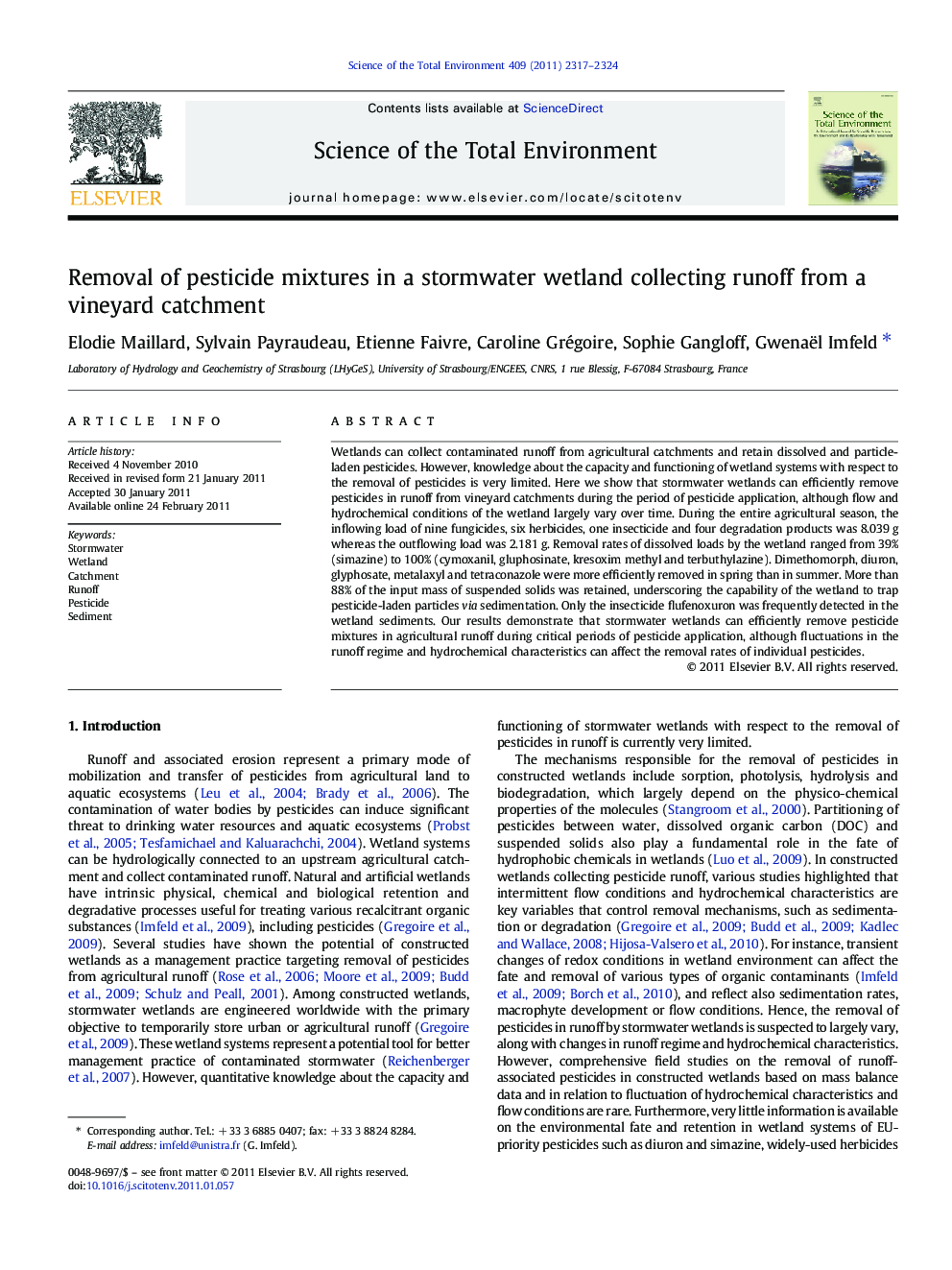| کد مقاله | کد نشریه | سال انتشار | مقاله انگلیسی | نسخه تمام متن |
|---|---|---|---|---|
| 4430498 | 1619851 | 2011 | 8 صفحه PDF | دانلود رایگان |

Wetlands can collect contaminated runoff from agricultural catchments and retain dissolved and particle-laden pesticides. However, knowledge about the capacity and functioning of wetland systems with respect to the removal of pesticides is very limited. Here we show that stormwater wetlands can efficiently remove pesticides in runoff from vineyard catchments during the period of pesticide application, although flow and hydrochemical conditions of the wetland largely vary over time. During the entire agricultural season, the inflowing load of nine fungicides, six herbicides, one insecticide and four degradation products was 8.039 g whereas the outflowing load was 2.181 g. Removal rates of dissolved loads by the wetland ranged from 39% (simazine) to 100% (cymoxanil, gluphosinate, kresoxim methyl and terbuthylazine). Dimethomorph, diuron, glyphosate, metalaxyl and tetraconazole were more efficiently removed in spring than in summer. More than 88% of the input mass of suspended solids was retained, underscoring the capability of the wetland to trap pesticide-laden particles via sedimentation. Only the insecticide flufenoxuron was frequently detected in the wetland sediments. Our results demonstrate that stormwater wetlands can efficiently remove pesticide mixtures in agricultural runoff during critical periods of pesticide application, although fluctuations in the runoff regime and hydrochemical characteristics can affect the removal rates of individual pesticides.
Research Highlights
► Stormwater wetlands efficiently remove pesticide mixtures in agricultural runoff.
► Removal rates of dissolved pesticide loads by the wetland range from 39% to 100%.
► Flow and hydrochemical conditions affect removal of individual pesticides.
► Stormwater wetlands efficiently trap pesticide-laden particles via sedimentation.
► Dissolved organic carbon can transport hydrophobic pesticides in stormwater wetland.
Journal: Science of The Total Environment - Volume 409, Issue 11, 1 May 2011, Pages 2317–2324